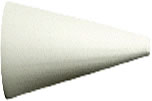Keratoconus |
In keratoconus, the cornea becomes thin and cone-shaped. This shape prevents light from focusing on the macula. As the disease progresses the cone becomes more pronounced, causing vision to become blurred and distorted. Because of the cornea's irregular shape, patients with keratoconus are usually very nearsighted and have a high degree of astigmatism that is not correctable with glasses.
|

|
This condition may be inherited or result from chronic eye rubbing and is more common in women and usually occurs in early adolescence.
In addition to nearsightedness and astigmatism, signs and symptoms include blurred vision even while wearing glasses or contact lenses and light sensitivity.
Keratoconus is usually diagnosed in patients as young as their 20's. For some, it may advance over several decades, for others, the progression may reach a certain point and stop. Tests can provide your eye doctor with details about the cornea's shape and is used to detect and monitor the progression of the disease.
Treatment
The first line of treatment for patients is to fit rigid gas permeable (RGP) contact lenses. Because this type of contact is not flexible, it creates a smooth, evenly shaped surface to see through. When vision deteriorates to the point that contact lenses no longer provide satisfactory vision, corneal transplant may be necessary to replace the diseased cornea with a healthy one. Even after a transplant, you most likely will need glasses or contact lenses for clear vision.
|
|
|

